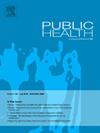Implementing a free continuing education webinar series: a case study of the Partners in Contraceptive Choice and Knowledge (PICCK) program
IF 3.9
3区 医学
Q1 PUBLIC, ENVIRONMENTAL & OCCUPATIONAL HEALTH
引用次数: 0
Abstract
Objectives
Virtual continuing education (CE) is viewed favorably by healthcare providers, but teams who administer these activities have concerns over the high costs to establish and maintain them. To understand the feasibility of implementing web-based CE, we assessed the effort, costs, and outcomes of the Partners in Contraceptive Choice and Knowledge (PICCK) free CE webinar series.
Study design
We reviewed the evaluation data from PICCK's 31 webinars alongside programmatic and process data to describe the outcomes, cost, and effort of implementing this webinar series.
Methods
We evaluated attendance, CE credit, knowledge, satisfaction, and planned behavior outcomes and performed a cost-identification analysis.
Results
Across all webinars, 6,506 people attended and 1,981 CE credits were distributed. The average evaluation score was 3.92/4, 99.8 % of attendees reported the information was relevant to their practice, and 88.0 % planned to make changes based on what they learned. After initial startup of the series infrastructure, 22.1 staff hours were spent administering each webinar. On average, the marginal cost of administering a webinar, including staff time, CE fees, and presenter compensation, was $14.98 per attendee. Webinar administration did not require additional resources beyond the existing technologies and infrastructure available at our institution.
Conclusions
Implementing this well-attended and satisfactory webinar series was feasible and not cost-prohibitive. Our results of high satisfaction and cost effectiveness demonstrate that financial concerns of offering virtual CE may be unfounded. Given the demand for high-quality virtual CE, others may benefit from developing a similar program and can do so without burdensome staff time or costs.
实施免费继续教育网络研讨会系列:避孕选择和知识(pick)项目合作伙伴的案例研究
目的虚拟继续教育(CE)受到医疗保健提供者的青睐,但管理这些活动的团队担心建立和维护这些活动的高成本。为了了解实施基于网络的避孕措施的可行性,我们评估了避孕选择和知识合作伙伴(pick)免费避孕措施网络研讨会系列的努力、成本和结果。研究设计我们回顾了PICCK 31次网络研讨会的评估数据,以及程序性和过程性数据,以描述实施该系列网络研讨会的结果、成本和努力。方法评估出勤率、CE学分、知识、满意度和计划行为结果,并进行成本识别分析。结果在所有网络研讨会中,有6506人参加,分发了1981个CE学分。平均评估分数为3.92/4,99.8%的参与者报告信息与他们的实践相关,88.0%的参与者计划根据他们所学的内容进行更改。在系列基础设施初始启动后,管理每个网络研讨会花费了22.1个员工小时。平均而言,管理一个网络研讨会的边际成本,包括员工时间、CE费用和主讲人薪酬,为每位与会者14.98美元。除了我们机构现有的技术和基础设施之外,网络研讨会的管理不需要额外的资源。结论实施这一系列的网络研讨会是可行的,而且成本不高。我们的高满意度和成本效益的结果表明,提供虚拟行政总裁的财务问题可能是没有根据的。考虑到对高质量虚拟CE的需求,其他人可能会从开发类似的程序中受益,并且可以在没有繁重的员工时间或成本的情况下这样做。
本文章由计算机程序翻译,如有差异,请以英文原文为准。
求助全文
约1分钟内获得全文
求助全文
来源期刊

Public Health
医学-公共卫生、环境卫生与职业卫生
CiteScore
7.60
自引率
0.00%
发文量
280
审稿时长
37 days
期刊介绍:
Public Health is an international, multidisciplinary peer-reviewed journal. It publishes original papers, reviews and short reports on all aspects of the science, philosophy, and practice of public health.
 求助内容:
求助内容: 应助结果提醒方式:
应助结果提醒方式:


